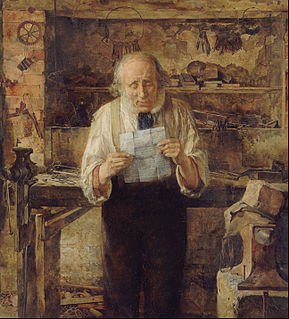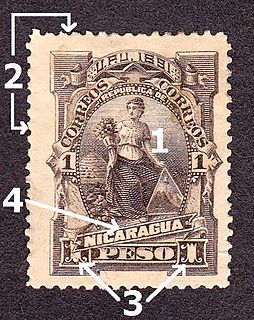
A letter is a written message conveyed from one person to another person through a medium. Letters can be formal and informal. Besides a means of communication and a store of information, letter writing has played a role in the reproduction of writing as an art throughout history. Letters have been sent since antiquity and are mentioned in the Iliad. Historians Herodotus and Thucydides mention and utilize letters in their writings.
Friendship books are small booklets made by stapling paper together, or are sometimes just sheets or strips of paper. They are usually decorated and the person who starts the book writes their name and address as the first person sending the book. People often include a list of interests as well. The FB is then passed around from penpal to penpal, and can often also become a way for one to meet new penpals. Most people hope to see the book again once it is full so they add their return address to the back cover of the book too, or inscribe "Return to Sender" on it. People also sometimes make FBs for someone else rather than themselves, in which case they write the name and address of the recipient on the front/at the top. Some people find friendship books fun because you can see where they have been in a trail back to the original sender/recipient.

The mail or post is a system for physically transporting postcards, letters, and parcels. A postal service can be private or public, though many governments place restrictions on private systems. Since the mid-19th century, national postal systems have generally been established as a government monopoly, with a fee on the article prepaid. Proof of payment is usually in the form of an adhesive postage stamp, but a postage meter is also used for bulk mailing. Modern private postal systems are distinguished from national postal agencies by the terms "courier" or "delivery service".
A first day of issue cover or first day cover (FDC) is a postage stamp on a cover, postal card or stamped envelope franked on the first day the issue is authorized for use within the country or territory of the stamp-issuing authority. Sometimes the issue is made from a temporary or permanent foreign or overseas office. Covers that are postmarked at sea or their next port of call will carry a Paquebot postmark. There will usually be a first day of issue postmark, frequently a pictorial cancellation, indicating the city and date where the item was first issued, and "first day of issue" is often used to refer to this postmark. Depending on the policy of the nation issuing the stamp, official first day postmarks may sometimes be applied to covers weeks or months after the date indicated.
Direct Client-to-Client (DCC) is an IRC-related sub-protocol enabling peers to interconnect using an IRC server for handshaking in order to exchange files or perform non-relayed chats. Once established, a typical DCC session runs independently from the IRC server. Originally designed to be used with ircII it is now supported by many IRC clients. Some peer-to-peer clients on napster-protocol servers also have DCC send/get capability, including TekNap, SunshineUN and Lopster. A variation of the DCC protocol called SDCC, also known as DCC SCHAT supports encrypted connections. An RFC specification on the use of DCC does not exist.

Registered mail is a mail service offered by postal services in many countries, which allows the sender proof of mailing via a mailing receipt and, upon request, electronic verification that an article was delivered or that a delivery attempt was made. Depending on the country, additional services may also be available, such as:
Client-to-client protocol (CTCP) is a special type of communication between Internet Relay Chat (IRC) clients.
A bounce message or just "bounce" is an automated message from an email system, informing the sender of a previous message that message had not been delivered. The original message is said to have "bounced". More formal terms for bounce message include "Non-Delivery Report" or "Non-Delivery Receipt" (NDR), [Failed] "Delivery Status Notification" (DSN) message, or a "Non-Delivery Notification" (NDN).

In postal mail, a return address is an explicit inclusion of the address of the person sending the message. It provides the recipient with a means to determine how to respond to the sender of the message if needed. The return address need not include a sender's name, but should include address or P.O. box details in the same way as the delivery address should. In some countries, the return address is conventionally located in the upper left hand corner of the envelope, card, or label. In the United Kingdom, the return address is usually placed on the reverse of the envelope, near the top.

Freepost is a postal service provided by various postal administrations, whereby a person sends mail without affixing postage, and the recipient pays the postage when collecting the mail. Freepost differs from self-addressed stamped envelopes, courtesy reply mail, and metered reply mail in that the recipient of the freepost pays only for those items that are actually received, rather than for all that are distributed.
Courtesy reply mail, or CRM, is a type of mail in which a business sends pre-printed, self-addressed envelopes or postcards to customers, who then affix postage stamps to the envelopes or postcards and mail them back to the business. Alternatively, the business can disseminate the envelopes or postcards with stamps already affixed, similarly to metered reply mail.
Metered reply mail, or MRM, is a type of mail in which a business sends pre-printed, self-addressed envelopes or postcards to customers, with postage prepaid on the envelopes or postcards with a postage meter. It is thus similar to courtesy reply mail with a postage stamp already affixed.
Email spoofing is the creation of email messages with a forged sender address.
A challenge–response system is a type of spam filter that automatically sends a reply with a challenge to the (alleged) sender of an incoming e-mail. It was originally designed in 1997 by Stan Weatherby, and was called Email Verification. In this reply, the sender is asked to perform some action to assure delivery of the original message, which would otherwise not be delivered. The action to perform typically takes relatively little effort to do once, but great effort to perform in large numbers. This effectively filters out spammers. Challenge–response systems only need to send challenges to unknown senders. Senders that have previously performed the challenging action, or who have previously been sent e-mail(s) to, would be automatically whitelisted.

Official mail is mail sent from, or by, an authorized department of government, governmental agency or international organization and normally has some indication that it is official; a certifying cachet, return address or other means of identity, indicating its user. In some countries, postage stamps have been issued specifically for official mail.

A Free Frank was a mark applied by means of a hand-stamp to parliamentary mail in Britain to indicate that the mailed item did not require postage. The privilege of free franking was granted to four different classes: Members of Parliament; peers sitting in the House of Lords; office-holders, largely as stipulated by Acts of Parliament; and to archbishops and bishops sitting in the House of Lords. Requirement for free franking were that the mailed cover had to be signed by the official sender. As a result, free franks were avidly sought during the first three decades of the nineteenth century for autograph collections. This was accomplished by cutting out the front panels of the envelope which carried the inscriptions which were required under the use of this privilege. These panels are referred to by collectors as free fronts.










